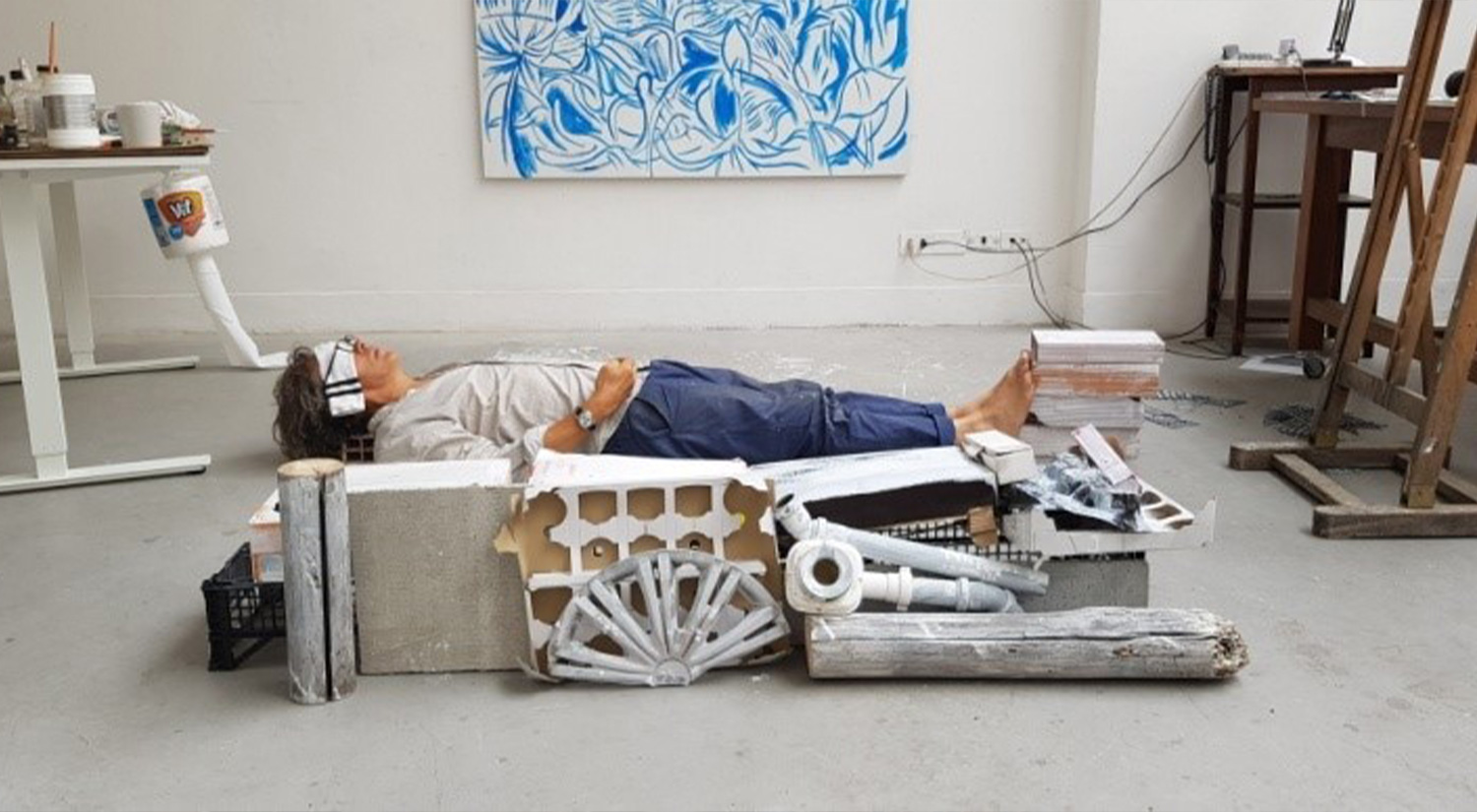My application to come to the British School at Rome in 2021 was based around the anniversary of the death in Rome of John Keats in 1821. He had travelled from England seeking relief, in the Mediterranean climate, from the symptoms of his tuberculosis, and found lodgings at what would later become the Keats-Shelley House, on the Piazza di Spagna. Although his condition proved to be far beyond any effective relief, his brief stay in Rome could be regarded as some kind of bitter fulfilment of his long absorption in the culture, literature and mythology of Ancient Greece and Rome, radiant in works such as On First Looking into Chapman’s Homer, Hyperion and Ode on a Grecian Urn. My interest also lay in his briefly expressed (but subsequently, by scholars, much-discussed) thoughts about what he termed ‘Negative Capability’; a stance that embraced an openness to sensations and feelings, an acceptance of conflicting emotions, and which he favoured in his writing over the more message-led poetry of his older contemporaries Wordsworth and Coleridge. I wanted to explore the potential in this approach for contemporary painting, at a time when there is considerable pressure on artists, from the public and commissioning agents, to be ‘on-message’, with clearly identifiable intentions manifested in their work.
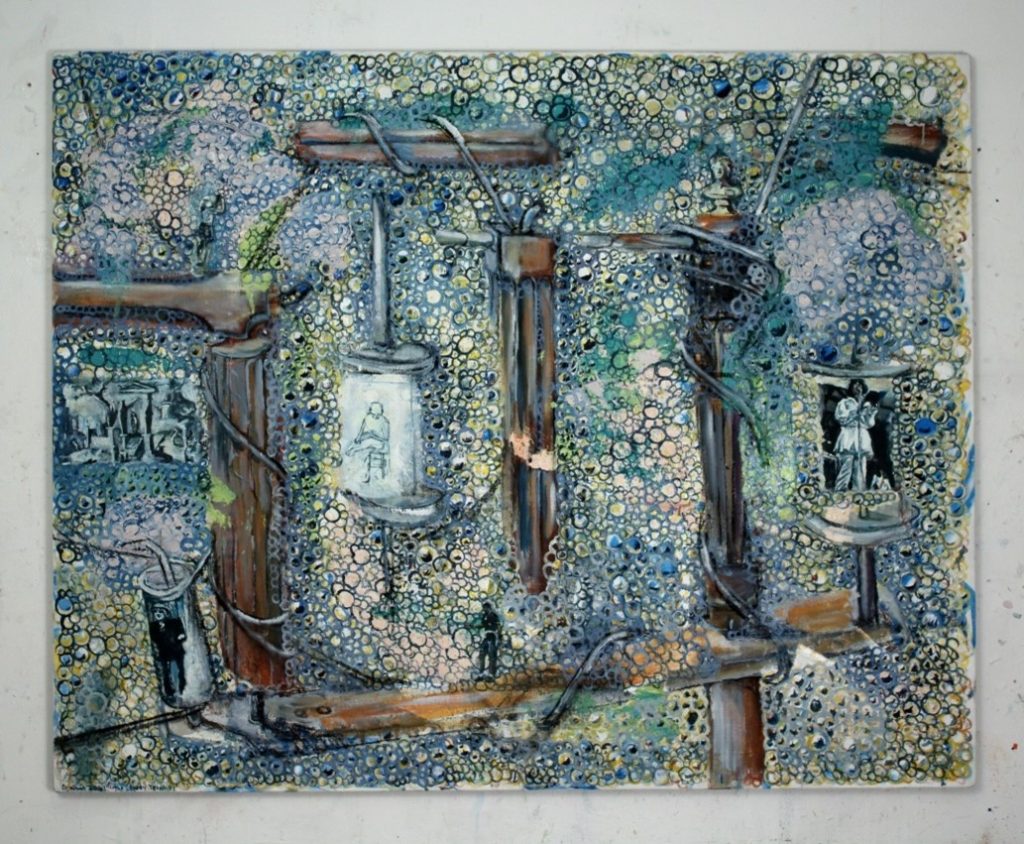
The curator and staff of the Keats-Shelley House were very welcoming, allowing me to spend long hours drawing and thinking about its ‘cabinet of curiosities’ collection, its interior spaces and its location overlooking the Spanish Steps. This view, from the window of the room where Keats spent his last days, proved very significant, allowing the contemporary visitor to inspect the non-stop parade of tourists posing for photos on the steps, with that intricate, slow dance that takes place between photographer and subject: back, forward, to the right, to the left, swapping places. This feeling of an encounter across distance was reinforced by the Covid precautions then in place, and also by my visits to view the fragmented Roman murals at the Palazzo Massimo, where little scenes of lovers, travellers and traders are framed and isolated by implausibly slender architectural devices. It brought to mind Keats’s letter to Fanny Brawne, in which, isolated in his sick-room in Hampstead after his first infection, he describes hoping at least to glimpse her through the window, knowing their courtship was doomed.
These aspects set the tone of two larger paintings I worked on at BSR, while in a series of smaller ones, named for various mythological figures, I explored pairings of figures (traders and commuters observed at the market by Flaminio Station, paired with tourists seen in Piazza di Spagna). As well as my habitual ‘bubblescape’ — small marks worked around the figures to lock details in place, consume them or push them forward — these included decorative details for funerary sculptures, images of which I sourced on my late-night forays into the BSR library. This ‘minor’ aspect of the work, related to memorials, would become more prominent in the paintings I made the following year.
I had embarked on the residency with no public outcomes planned, so it was a welcome surprise that curator Giuseppe Albano proposed that I show this work at KSH, in an exhibition I called Cloudy Trophies (from a line in Keats’s Ode to Melancholy) running from September to December 2021. It felt like an aptly circular trajectory, of ‘research outcomes’ returning to their source, enhanced when the House’s trustees accepted one of the paintings, Young Man Dreaming IV into the House’s permanent collection. In a happy coincidence of timing, the British Embassy proposed another of the paintings, Selene, as a diplomatic gift from the British government to Italian Prime Minister Mario Draghi following the G20 Summit in Rome.


I returned to the BSR in summer 2022 for the final postponed month of my fellowship. This year marked another anniversary, of the death of Keats’s friend, Percy Bysshe Shelley, drowned in the Bay of Lerici. My visits to the Non-Catholic Cemetery in Testaccio, where Keats and Shelley both have their burial plots, and a long walk along the old Via Appia, lined with fragments of funerary monuments, had prompted thinking about how we ‘memorialise’ people and some studio experiments with what a modern memorial might consist of.
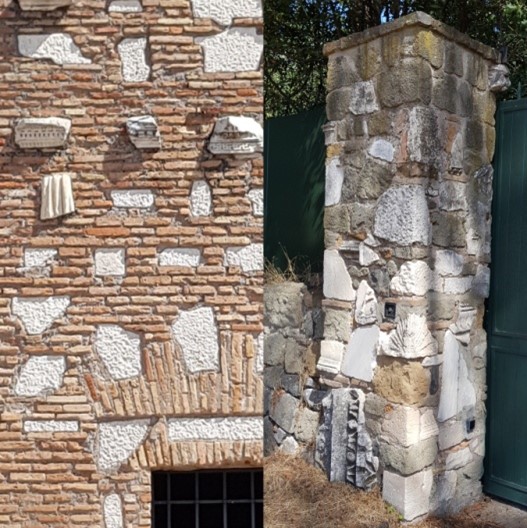
These were further fuelled by — in an excellent example of the casual exchange of wisdom that happens at BSR — artist Jo Stockham mentioning the term ‘Spolia’ (the re-use of jumbled fragments of carved stone). The term could actually describe Rome in general, but also could be an analogy for our own memory and how we process the cultural ideas handed down to us. At times I felt like a beginner-archaeologist, absurdly scrabbling through the foothills of a gigantic spoil-heap of the imagination.
I had also, in the intervening months in London, become increasingly preoccupied with Mary Shelley’s portable writing desk, a key exhibit in the Keats-Shelley House, and upon which she may have written the first drafts of Frankenstein. I have used versions of it as a motif in a number of paintings, as a physical embodiment of a writer’s ideas unfolding. The assistant curator of KSH invited me in to see the desk’s inner compartments opened, revealing a single item: a small piece of what appears to be driftwood. No-one knows its provenance, though it is tempting to imagine it is from Percy Shelley’s beach cremation.
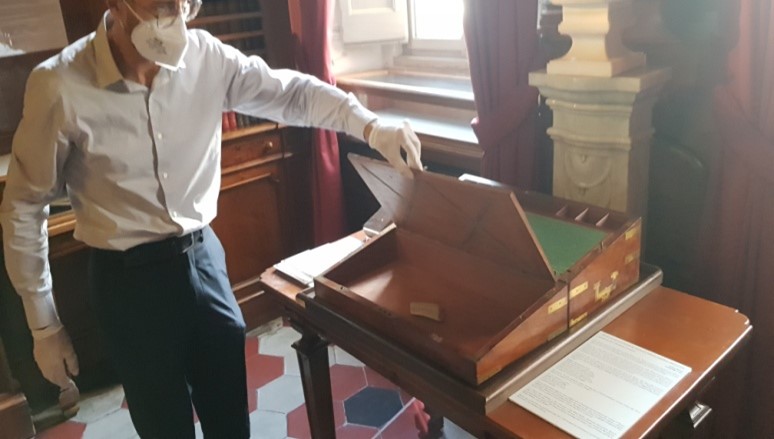
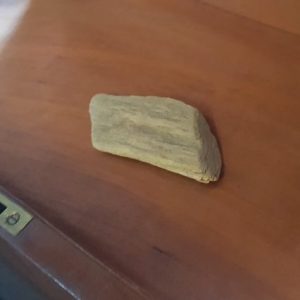
The element of doubt simply prolongs its provocation to the imagination. When I re-read ‘Frankenstein’, I was struck most forcibly by the chapter narrated by ‘The Creature’ himself: stumbling around the countryside, describing his ‘sensations’ of the natural world and his unpredictable encounters with people. It is a useful hypothesis to imagine ‘the artist’ as this creature, similarly struggling to make sense of the world in their own terms. I repeatedly painted myself clamped within the jaws of Shelley’s desk, or flattened across its green baize. The artist is a person whose professional persona becomes largely a fusion of others’ perception of their work, rather like ‘The Creature’ stitched together from body-parts.
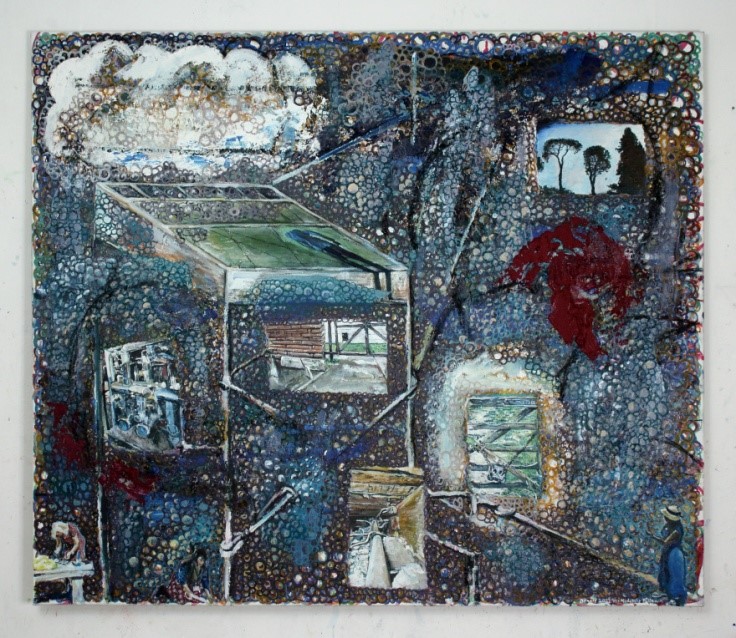
I will showing some of the outcomes of my fellowship in a solo exhibition Her Midnight Pillow at Art Space Gallery, London, 4th November to 16th December 2022, with an accompanying publication that includes a commentary on the work by Jeremy Tambling.
The Fellowship enabled two periods of concentrated working in the BSR’s beautiful studios, supported by the hospitable and relaxed working atmosphere of the School, and has been even more productive for me than I could have anticipated: my experience of Rome may yield a harvest of paintings long into the future. I hope to return to the City quite soon, and am exploring the possibility of a exhibition project based on the landscape and ‘inhabitants’ of the Non-Catholic Cemetery in Testaccio.
Image captions:
1. Cloudy Trophies 2021 122.5 x 153 oil & charcoal on linen; 2. (left): Young Man Dreaming IV, oil & charcoal on linen 26 x 36 cm; Right, Selene, oil & charcoal on linen 20 x 25 cm; 3. ‘Spolia’ along the Via Appia Antica; 4. Luca Caddia at the Keats-Shelley House revealing the inside of Mary Shelley’s portable writing desk; 5. Her Midnight Pillow 2022 122 x 142cm, oil & charcoal on linen

